This week, being the final week of Blogging Marathon #56, the theme
is Bloggers choice, where each one of us choose the topics to suit our
taste / preferences.
I have taken up
celebrations as the theme and I will be showcasing functions/ festivals /
poojas that we do at home.
The first is line is Deepasthamba Pooja / Poojay.This pooja is performed at home by the people of Karnataka especially by the Madhwa Community.who are the group of people who follow the teachings of Shri Madhwacharya.
There are several functions, festivals and rituals that are unique and specific to this community and over the past few years, I have been documenting this on the blog.This too shall go into that list.
This pooja is performed by unmarried girls praying to get a good husband.In other words, it is praying to Goddess Parvathi seeking her blessings to get a husband who is as good as her consort – Lord Shiva. Hence it is also referred to as Gendan Poojay, where Genda means hunsband.
The initiation into this pooja starts when the girl child
is 5 years old and is done on the above said day every year till she
gets married.
Since my kiddo is too small to understand the significance
of this pooja, we tell Lil Angel to pray to God asking her blessing to
keep us healthy ,wealthy and wise and bless all around us.
This pooja is done in the Kannada month of Ashada [ July- August /Tamil month of Aadi ] on the Amavasya day [No moon day].
It is performed in the morning,avoiding the Raghu Kaala which is
the inauspicious time of the day where all new ventures are avoided
including starting of any pooja.
After a nice bath, the girl dresses up
in the new dress which has been got for this pooja.
So, coming to the pooja part….
Two silver idols,called the stamba like the one seen in the first pic below are the most important aspect of this pooja.They are pyramid shaped and in pairs.[ It is actually plain without the dots.Mom had kept it ready for the pooja by keeping sandal paste dots].
The Stamba is usually given by the mother to her first daughter when she gets married and leaves to her husbands house.
As I mentioned earlier,the stamba / idol is generally passed on through the generations. The one you see in the pic is my grandmothers and she passed it on to her first daughter, my mom, who in turn gave it to me and I will be passing this on to my Lil Angel at her wedding.
When there are more than one daughters in a family, then the traditional one is given to the first daughter and new ones are given to the others / they will pray with stambas made with clay/ mud. When making this with clay, one is a bit taller than the other and it is made at an auspicious time a day before the pooja so that it is dry and ready on the pooja day.
In some families, instead of using the silver idols, idols made with a type of mud/ clay is used and this is dissolved in well water/ or dissolved in water and put into the pot which houses the Tulsi plant[Thulasi Kattay] the day after the pooja is performed.
Also when there are more than one daughter in the family to perform this pooja, pairs of stamba are made of clay and each one prays to a pair.
Things needed:
Apart from the regular lamps and incense sticks, turmeric powder and kumkum , the following are required for the pooja…
A set of Stamba / idols
Yellow thread made by dipping white thread in a thin turmeric paste
Dry turmeric rhizome
Gajavastara – Cotton garland
Sandal paste
Flowers
Flower garland
A handful of rice
Blouse bit usually in red / maroon .Black color is not to be used.
A small silk skirt
Mirror
Akshathay– Turmeric colored auspicious rice
Sodal Arathi[ last one in the pic]
Betel leaves, Betel nuts, Fruits, Coconut for Neivedhya [offering to God]
Let’s get ready for the pooja….
- Take the sandal paste and make dots with it on the stamba on top and on the sides and keep aside to dry.
- Tie the 2 turmeric rhizomes to the thread
- Make kumkum marks on the gajavastara
- Place the items for neivedhya in a bowl/ tray
- Try a few flowers to a yellow thread and keep aside. This will be tied on the right hand of the girl who is performing this pooja.
- In a small silver plate, dissolve kumkum in a little water and keep the sodal lamps and set it up for aarathi.
Firstly, light the lamps and incense sticks.
Take a wooden plank[Manay] and draw rangoli on it and place the skirt over it.Place the mirror behind the plank.
Place the blouse bit over the skirt
Spread a handful of rice on the blouse it
Tie the thread with the turmeric rhizome on the idol and keep a kumkum dot on the turmeric rhizome.Place the tho idols on the rice.Also keep the thread with the flowers nearby
.
The girl sits in front of the idol and performs pooja. First with turmeric ,then kumkum, akshathay [yellow colored auspicious rice] are offered to the Stamba. During the pooja shlokas and songs are sung.
Then gajavastara and flower garland,flowers are also offered
The coconut is broken into 2 and placed with the betel leaves, betel nuts and fruits.After offering the neivedya , Sodal Aarathi shown to the Stamba
Kalpoora [camphor] Aarathi follows
This is how the stamba looks after the pooja..
Then the girl who performed the pooja is seated on on a mat facing the east.She is given the half of the coconut that has ‘eyes'[The part that has 3 dark spots on the outside] , betel leaves, betel nuts and fruits.
While she hold it with both her hands,urutani is done for her feet.Her legs are smeared with a thin paste of turmeric and red lines with kumkum as seen in the pic.[The lines on the sides of the feet are not captured well in this pic]
The thread with flowers which was placed in the pooja is tied on the right hand near the wrist and a kumkum dot is placed on the thread. The girl then keeps down the things that she was holding so long and prays to God once again.
The pooja ends with this. The altar is left as such till the next day.
After the pooja,the habbadha adugay ,a meal
prepared during fuctions/ festivals, follows with payasa[kheer/
dessert] , amboday[lentil fritters] and the usual rice,sambar, rasam,
curries,pappad, curd,pickles etc.
The following day, the flowers , gajavastara, turmeric threads are all removed and either put into a well, or put into the pot with Tulasi plant[Thulasi kattay]
The stamba is wiped with a cloth and kept away safely till the next year. If using clay stamba, it is dissolved in water and also put into the thulasi planter.
The altar is not disturbed if the day following the pooja falls on Tuesday / Friday as these days are considered auspicious and is definitely not a good time to remove things from the altar.
The thread that is tied on the girls hand is not removed for at least 3 days. It can be taken off after 3 days except on Tuesday and Friday. This too is put into the well / thulasi planter.
This is how we do the Deepastamba pooja in our family. The methods / rituals may vary from family to family…
Are you eager to find out which festival / function I am going to talk about tomorrow? Well, you have to wait and see :).Be sure to drop by tomorrow….
Take a look at all that was served so far on The Buffet On Table…
Check out the Blogging Marathon page for the other Blogging Marathoners doing BM# 56
Bon Appetit…


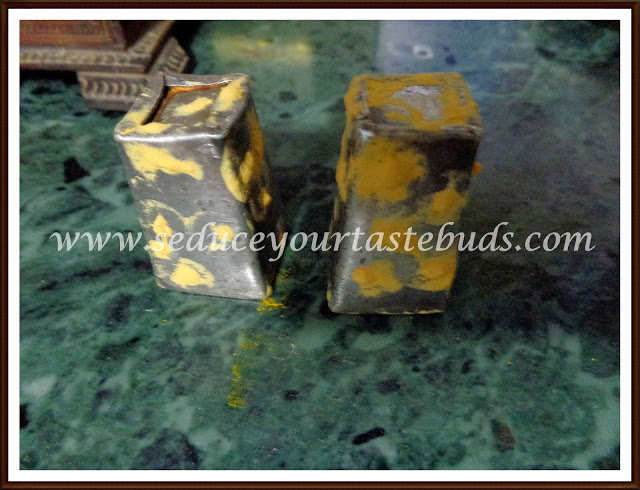
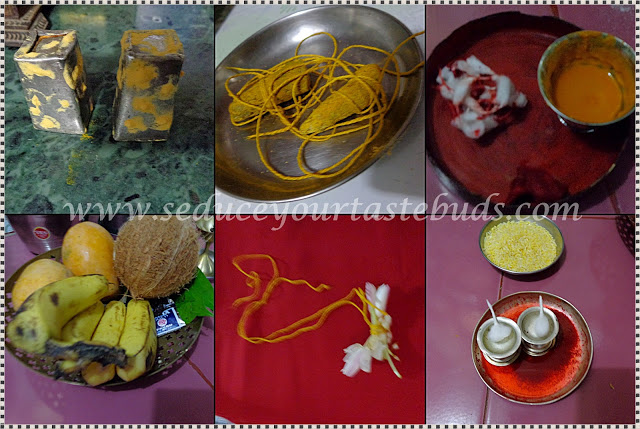
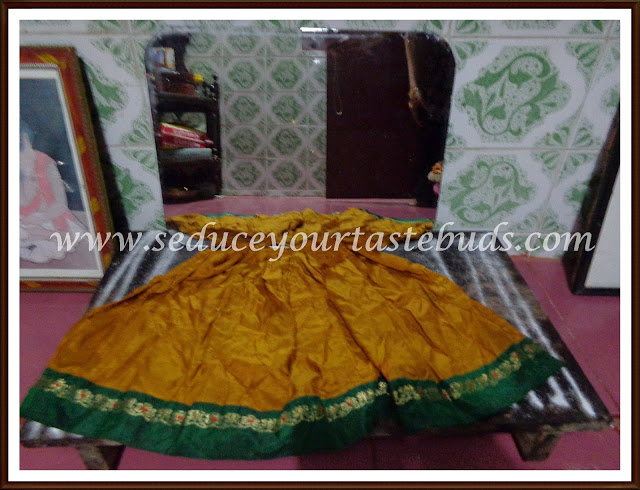
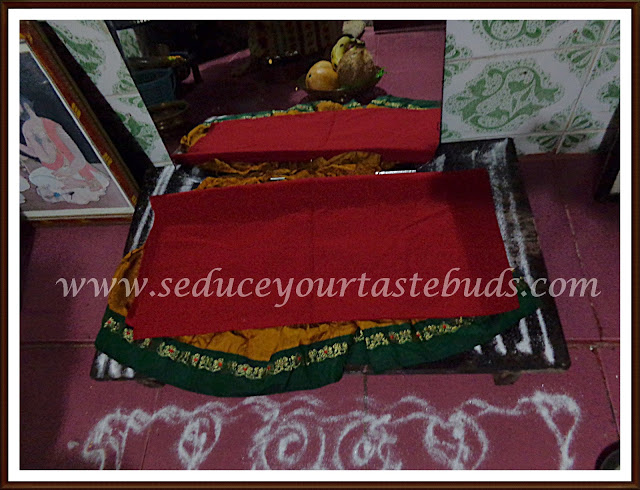
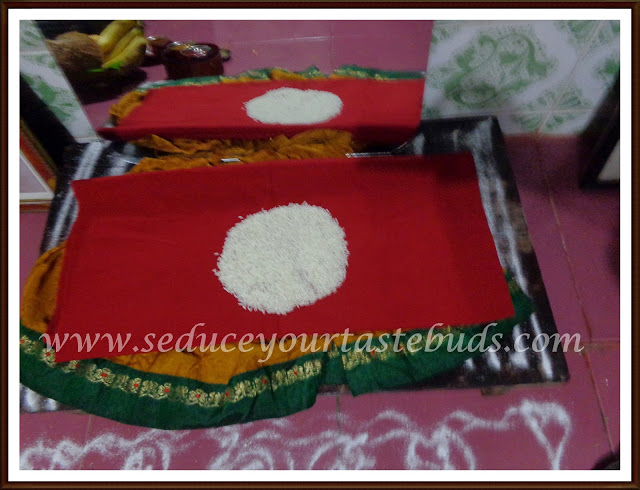
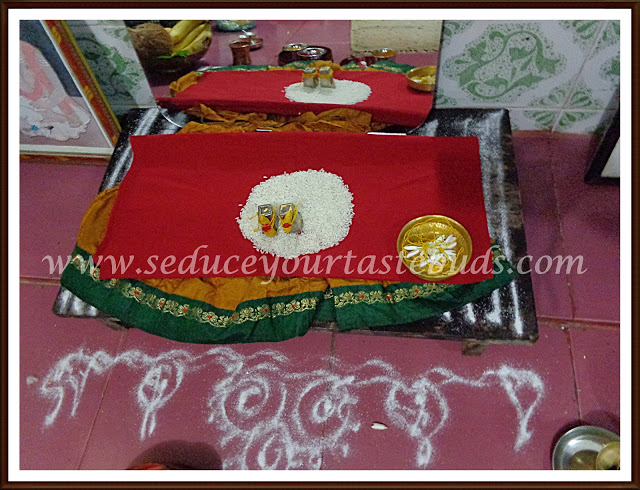
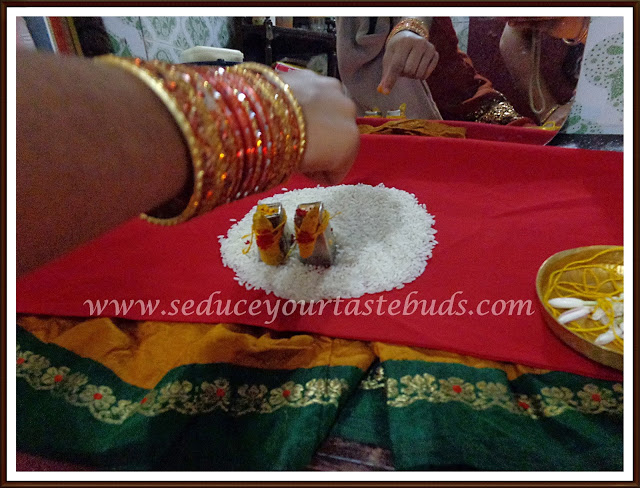
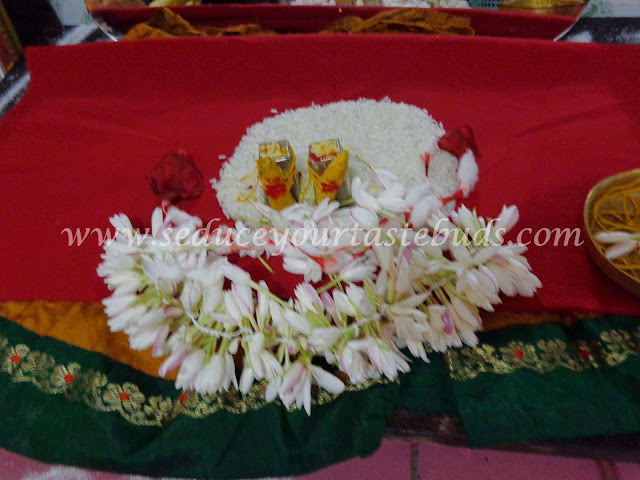
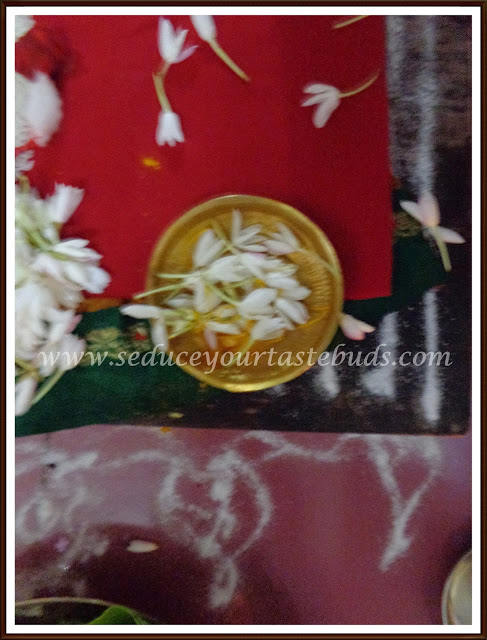
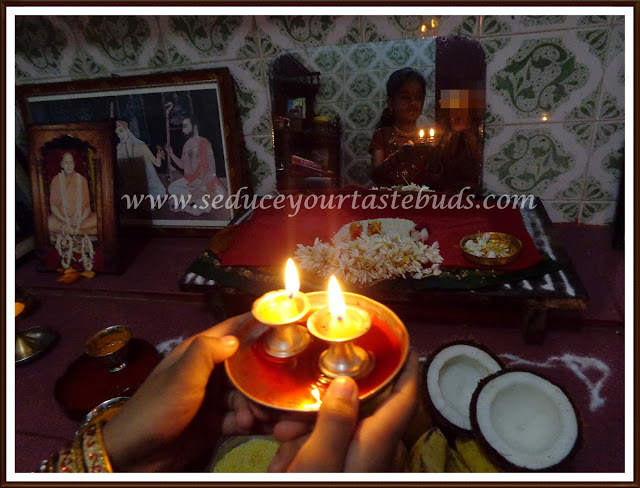
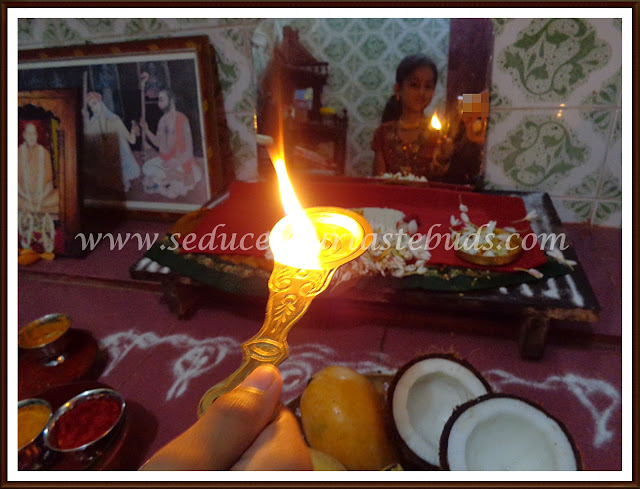
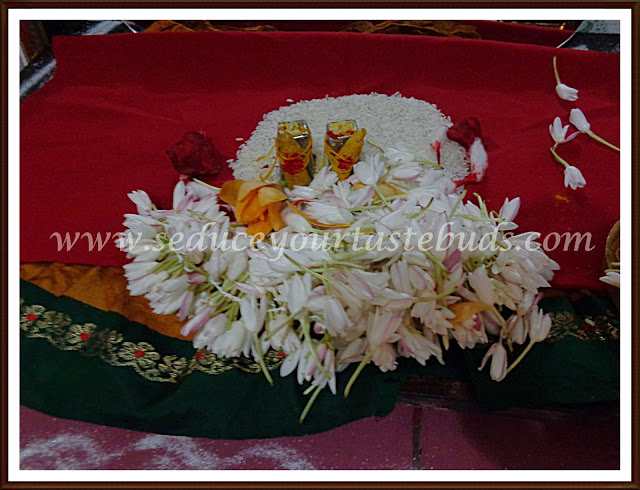
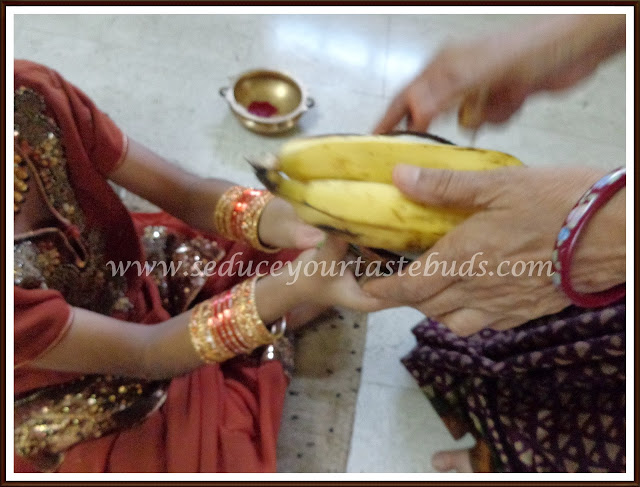
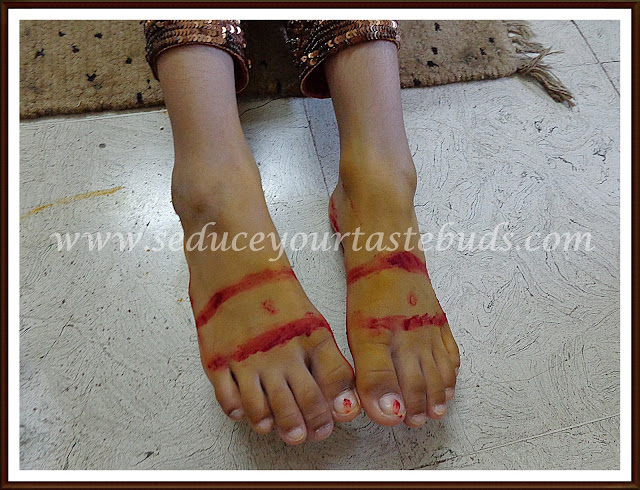
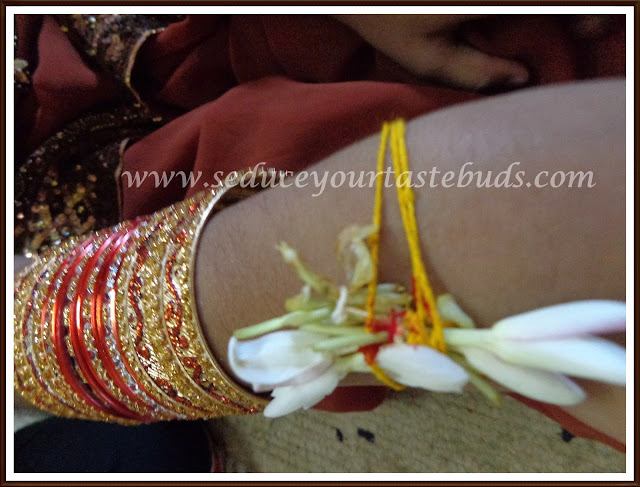


We do not do this pooja and really enjoyed reading the details of this pooja. You chose a very interesting topic and looking forward to your next two posts.
PJ that's a fantastic documentation of our culture and poojas, I wasn't aware of this pooja and it was very nice reading through it…Great job!
Wow.. I am a Smarta. We do this too on the amavasya day but in a different way. I remember doing this. Why they dont have this boys? They also need to pray for good wife. I always think why all these habbas are only for girls?
I'm not aware of this pooja, that's perfect documentation of the our rituals and the methods to perform the pooja.Well done. Looking forward to the other posts in this series.
A very detailed narration and documentation of this ritual, PJ. We don't follow this but something similar called mangala gowri vratham with similar rationale but different procedure.
Love the way you explained everything in so much detail PJ. This pooja is new to me and it is really interesting to learn about it.
A detailed post, learned something new.
This pooja is new to me but I love reading all about your culture and tradition.Very well explained and you did lots of efforts.
very well written post… helpful procedures and narration…
Fantastic, this is quite a new pooja for me, never heard about this.. Love the way you have narrated the pooja Pj..Good to know about this beautiful pooja.
That is a neat documentation of the religious procedure, PJ. I am quite lazy when it comes to following all the customs. 🙂
Very new to me , loved the beautifully written post with such an elaborate effort . Super work PJ.
We never have done this pooja. I love teh post its a new facet of Hindu religion that I was not aware of.